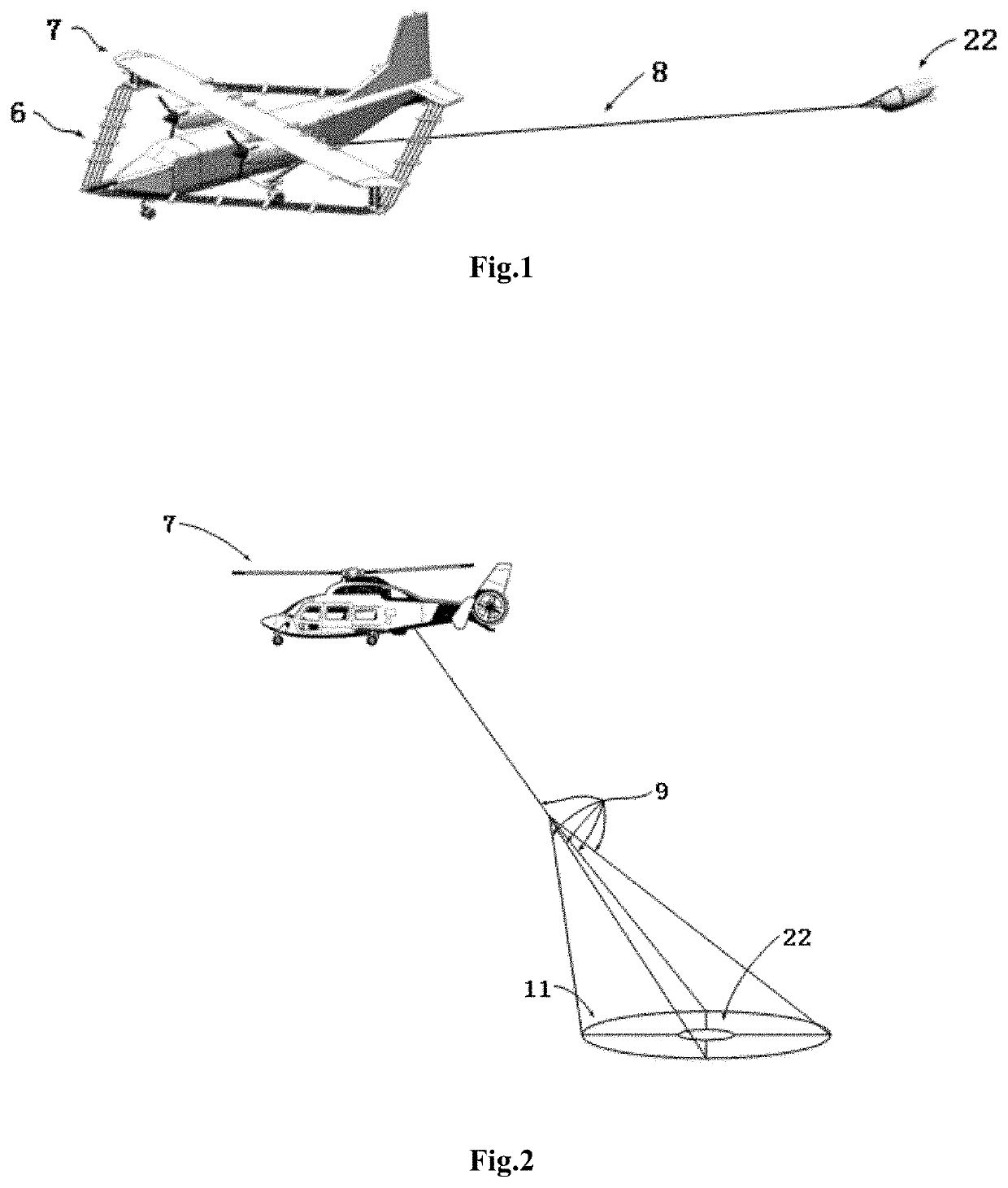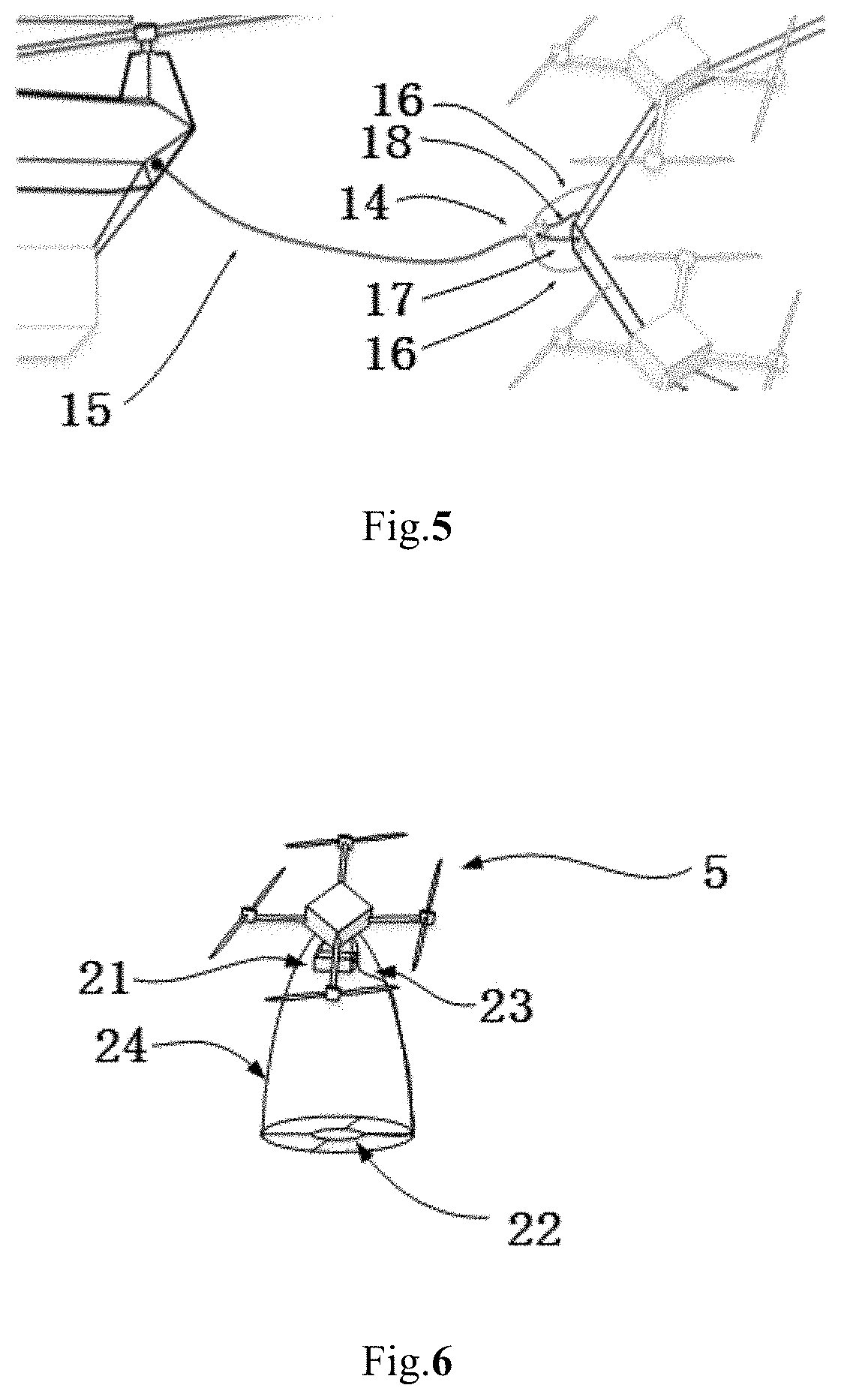Distributed Airborne Electromagnetic Detection System
a technology of electromagnetic detection and airborne, applied in the field of geophysical exploration, can solve the problems of difficult to achieve rapid large-scale coverage, low detection efficiency, and relatively high cost, and achieve the effect of reducing the distance between the uav and the transmitting loop structure, high economic efficiency, and high performan
- Summary
- Abstract
- Description
- Claims
- Application Information
AI Technical Summary
Benefits of technology
Problems solved by technology
Method used
Image
Examples
Embodiment Construction
[0046]In order to illustrate the objectives, technical solutions and advantages of the present disclosure more clearly, the embodiments of the present disclosure will be described below with reference to the accompanying drawings. It should be noted that, in the case of no conflict, the embodiments in the present disclosure and features in the embodiments can be arbitrarily combined with each other.
[0047]An embodiment of the present disclosure provides a distributed airborne electromagnetic detection system. FIG. 3 is a schematic structural diagram illustrating a distributed airborne electromagnetic detection system according to an embodiment of the present disclosure.
[0048]As shown in FIG. 3, the distributed airborne electromagnetic detection system comprises a transmitting system 1, a receiving system 2, a trunk module 3, an earth station 4, and several UAVs 5. The earth station 4 is arranged on the ground, and the transmitting system 1, the receiving system 2 and the trunk module...
PUM
 Login to View More
Login to View More Abstract
Description
Claims
Application Information
 Login to View More
Login to View More - R&D
- Intellectual Property
- Life Sciences
- Materials
- Tech Scout
- Unparalleled Data Quality
- Higher Quality Content
- 60% Fewer Hallucinations
Browse by: Latest US Patents, China's latest patents, Technical Efficacy Thesaurus, Application Domain, Technology Topic, Popular Technical Reports.
© 2025 PatSnap. All rights reserved.Legal|Privacy policy|Modern Slavery Act Transparency Statement|Sitemap|About US| Contact US: help@patsnap.com



